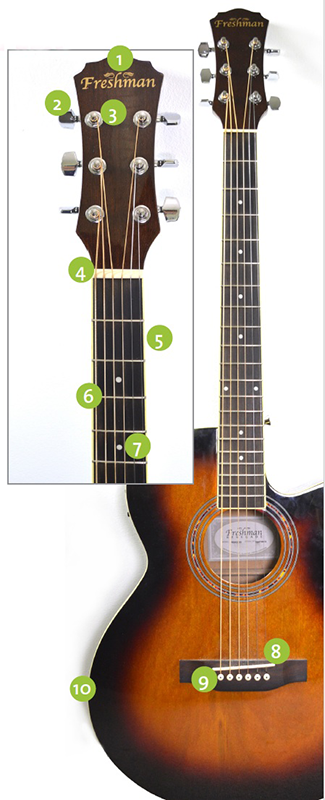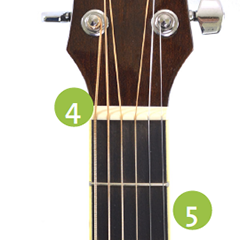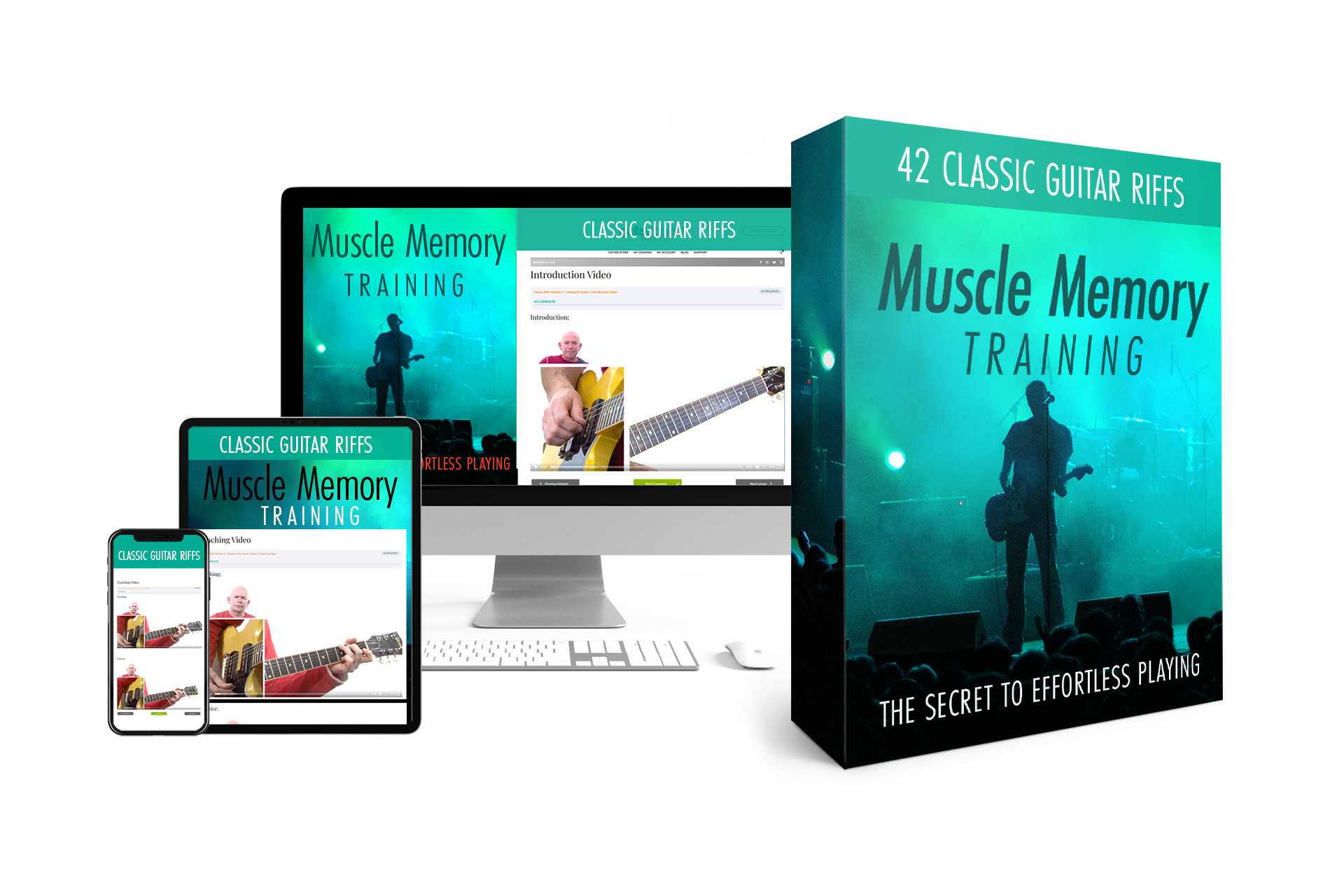Whatever you do, it is important to know and understand the tools you are working with, in this case the component parts of your guitar.
By increasing your understanding it will allow you to integrate with your “axe” appreciate what makes up the sound and, perhaps more importantly, identify any shortcomings should, god forbid, anything go awry. You could even relate this to your partner… so welcome to the Guitar Coach Relationship Advisory Service!!!!
Anyway, we digress; have a look at the video for a detailed explanation and demonstration, but here is a snapshot of those guitar components.

1. The Head Stock. This is the anchor for the strings at the end of the neck.
2. The Tuning Keys (and Machine Heads). These are used to tighten or loosen the strings so the guitar can be tuned by winding them around a small post.
3. String pegs. Used to hold the strings in place
4. The Nut. Made of plastic or bone, it’s function is to direct the strings perfectly toward the bridge.
5. The Fretboard – This is, essentially, the neck of the guitar where the fret wires and fret markers are
6. Fret Wires. (Generically known as frets). These are the metal bars that mark off specific notes along the fretboard. The frets allow us a greater margin of error in finger placement.
7. Fret Markers remind us where we are along the fretboard (neck) and help us to know what note we are playing without counting frets from the nut.
The Pick Guard (not on this guitar) protects the Body from the wearing effects of constant strumming.
8. The Bridge is the anchor for the strings in the Body.
9. The Saddle and The Nut must be aligned just right to make sure that the Action (the height of the strings from the fretboard) is not too close to make sound, or too far to press down.
On an electric guitar, the strings often connect directly to the Bridge. On an acoustic guitar, the Bridge Pins hold them in place.
On an electric guitar, the Pickups are where the electrical signal is created that travels through the input jack, through the guitar cable and into the Amplifier (or Amp.)
10. Body. These are the convex and converse curves that should “fit” your own body size




